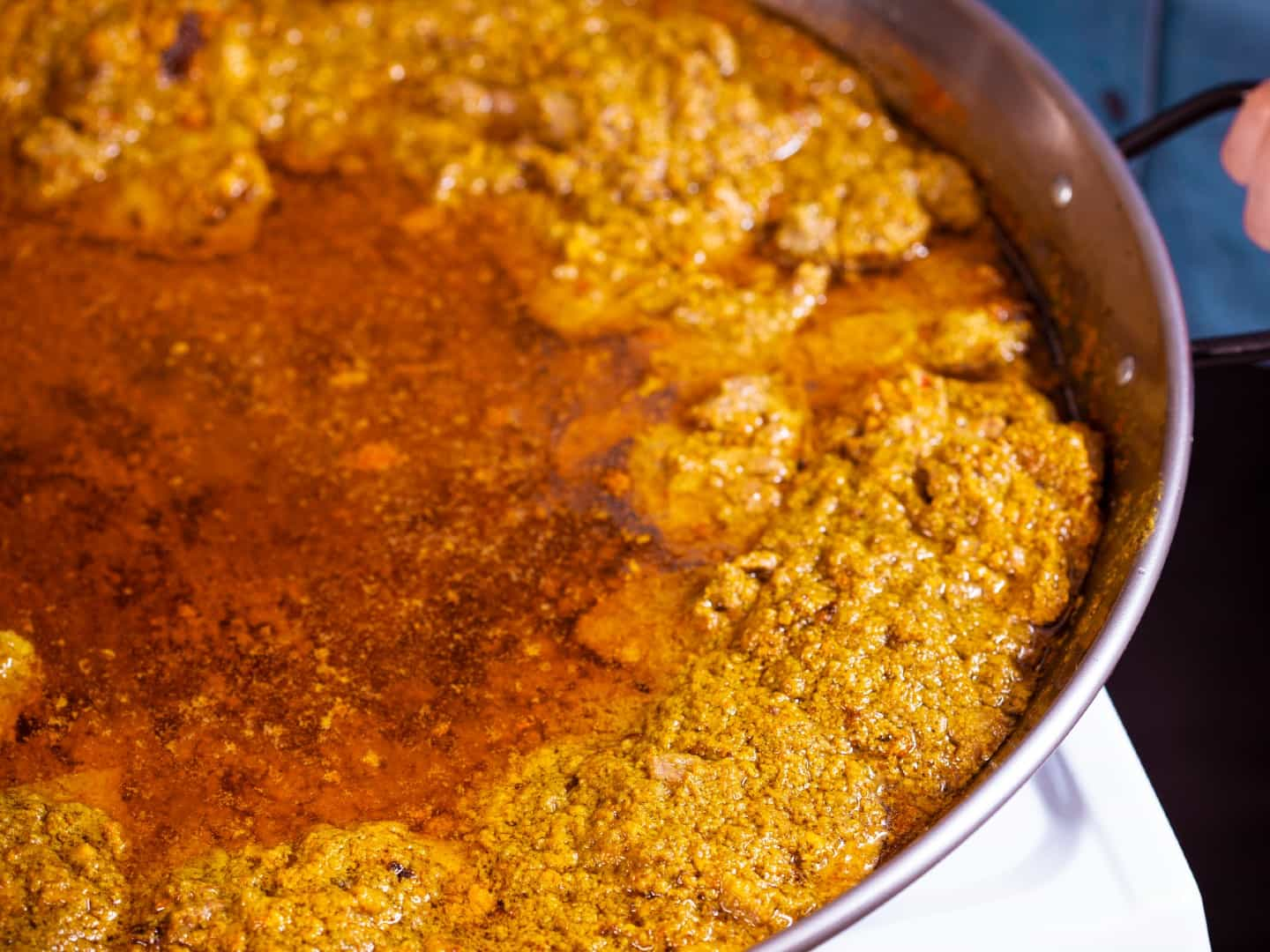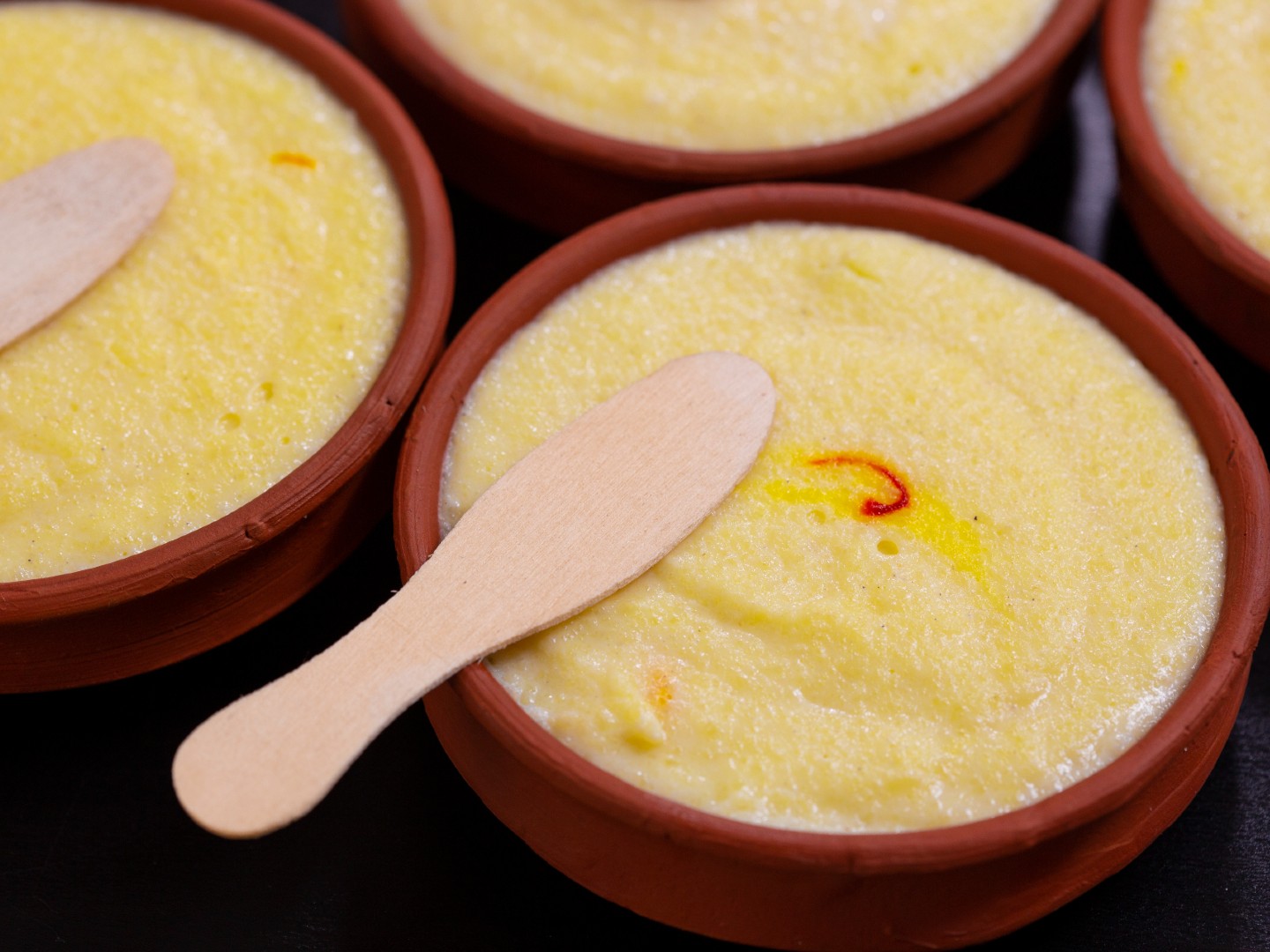Phirni
Creamy, mildly sweet, rice pudding, set in an earthen bowl, firni/phirni can be customised to a few different flavourings of your choice.
- Cooking time1 hour
- Calories234kcal
[In this series, we tip our hats to some of our favourite dishes available in the restaurants, cafés, and cabins of Calcutta. Our purpose in doing so is to document their existence, and give people a way to recreate them if they happen to live away from the city. Make these at home, or hunt them down from the source—irrespective of how you get your hands on these items, we hope you enjoy them.]
Different parts of India have their own types of phirni—Punjabi phirni and Kashmiri phirni are especially well known. This particular style of phirni is popular in Mughlai eateries in Calcutta. No biryani meal is complete without phirni for dessert.
After testing various proportions of rice to milk, milk to sugar, as well as testing with different types of rice, we have finally settled on a phirni recipe that is quick and easy to make, but tastes exactly like the phirni we have eaten in our favourite Mughlai eateries in Calcutta such as Aminia, Arsalan, Shiraz, Aliah, Shabir, etc. This phirni is made with very simple ingredients—rice flour, whole milk, sugar and flavouring agents (we are using saffron or zafran in our phirni). Our version is made without any condensed milk or mawa because we found that they don’t make any noticeable difference to phirni. We also like our phirni to be creamy and plain, so we have left out any additional garnishes.
Books in this recipe
Ingredients
- 75 g basmati rice (non-parboiled or aatop)
- 1 litre full-fat milk
- 75 g sugar
- 1 pinch salt
- ½ tsp cardamom powder
- 4–5 strands faffron
Method
- Wash the rice and soak it in water for 30 minutes. Be careful not to overwash or we’ll lose the starch, which we want to preserve for creaminess of the phirni. After 30 minutes of soaking, strain the rice over a colander and leave it to air-dry.
- Soak the bhnaar in water for 30 minutes as well.
- Once dry, transfer rice to a grinder and reduce it to a powder in 4 or 5 short pulses. The grind should neither be too coarse nor too fine. Take 1 cup of milk out of the total milk and mix the rice flour in it. Premixing rice flour with cold milk before adding it to hot milk will prevent clumping.
- Gently toast some cardamom pods in a pan and crush them to a powder. Sift through a tea-strainer to ensure the powder is fine. We need ½ a tsp of cardamom powder; we got ours from 4 large pods of cardamom.
- Heat milk in a heavy-bottomed pan and reduce it on medium heat for about 10 minutes. Then add the rice flour and cold milk mixture and stir immediately to prevent rice from clumping.
- Add 4 or 5 strands of saffron OR 1 tsp of kewra water (whichever you are using) to the pan.
- Continue reducing on low heat until phirni thickens. Keep stirring continuously, as that will help release starch and make the phirni creamy.
- Once the rice is cooked, add sugar and a pinch of salt. Don’t skip the salt—it balances the sweetness and makes a big difference to the taste of phirni! Also add the cardamom powder now.
- Keep cooking until the phirni reaches the right consistency. It should neither be too thick, nor too thin—when poured, it should just about find its own level.
- Transfer to the maati’r bhnaar or any ceramic or glass bowl to set. Cover the bowls/dishes with a plastic wrap and place in the fridge for 24 hours to set completely. The plastic covering will prevent the phirni from absorbing any ‘funny fridge smells’. Enjoy chilled.


























